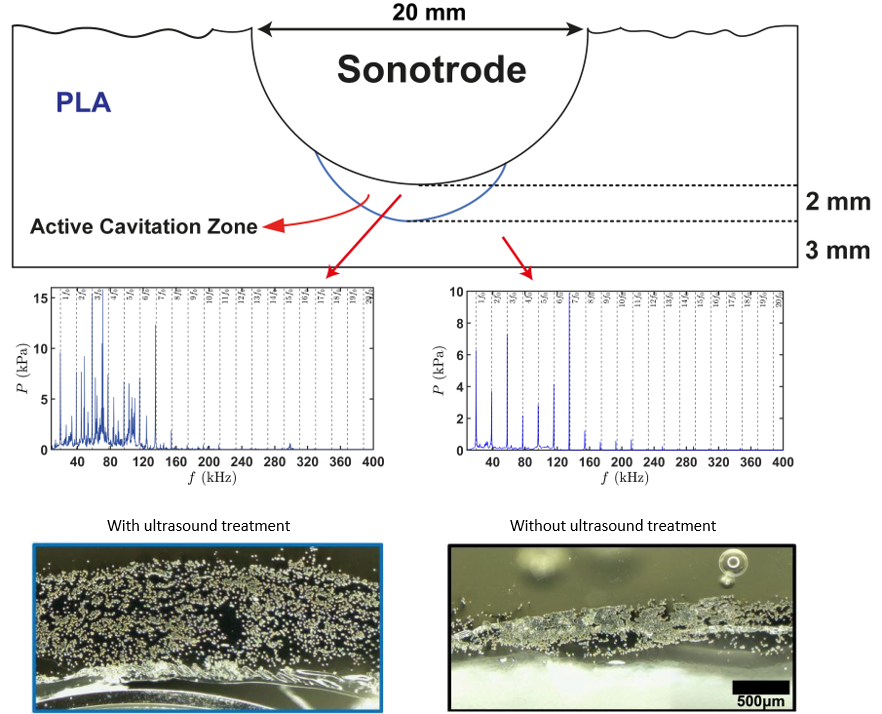Ultrasonic Processing of Composites

Ultrasonic processing (acoustic streaming) and cavitation (collapsing of bubbles) improves impregnation quality and fibre distribution in thermoplastic melts. Research in collaboration with Brunel University London (Prof. Eskin) and the German Aerospace Centre (DLR) revealed that the driving mechanism of the ultrasound-assisted fibre impregnation lies in the cavitation. Upon bubble collapse the acoustic pressures generated in the melt in the vicinity of fibres force penetration and spread of a very thick and viscous polymer melt. A more homogenous structure is formed. Post-processing mechanical testing showed that the produced sonicated parts (3-D printing filaments) exhibit a 50% better strength than the non-sonicated parts. The produced composites offer significant advantages being lightweight, having high strength and stiffness, and being resistant to corrosion and fatigue. Additive extrusion technologies for 3D-printing with continuous fibre-reinforced materials are of high interest for aerospace and other advanced applications.
Trial results showed that high quality fibre impregnation can be achieved within ultrasonic treatment in less than 3 seconds in a continuous process. These promising findings open the way for large scale implementation switching from outsourcing pre-impregnated (pre-preg) materials (used in Additive Manufacturing machines, to produce continuous fibre-reinforced), tied up with processing complexity, to turn-key solutions that will allow a robust set up to be in place (process repeatability and stability) promoting the continuous (without intermediate steps) production of 3D parts.
